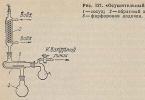Ford Focus is a car in the C-class segment produced by Ford from 1998 to the present day. During its history, the car has undergone three generations of development. The British magazine CAR considers him one of the 50 greatest cars over the past 50 years.
Focus is very popular car- In Europe it is among the 10 best-selling cars, and in Russia it was the best-selling foreign car 2010, and in 2012 the best-selling car in the world.
The Focus's closest competitors are cars from other brands, such as Citroen C4, Hyundai Elantra, Honda Civic, Renault Fluence, Kia ceed , Opel Astra , Peugeot 301, Skoda Octavia,Toyota Corolla, Toyota Auris, Chevrolet Cruze, Mazda 3, Mitsubishi Lancer, Nissan Almera, Peugeot 308, Renault Fluence and Volkswagen Golf.
First generation
Ford introduced the first Focus in 1998 in Europe as a replacement for the . The first generation was produced until 2004. In 2002, restyling was carried out, including updated headlights, bumper, radiator grille, center console, seats and an additional set of options.Sales began in North America in October 1999 as a Christmas surprise. to CEO Ford company to Jacques Nasser.
The focus was carried out in various modifications body styles - 3-door hatchback, 5-door hatchback, sedan and station wagon. The transmission is available in three options - 4-speed automatic, as well as 5- and 6-speed manual. The engines have wide choose- gasoline: 1.4, 1.6, 1.8 and 2.0 liters, as well as diesel engines of 1.8 liters.
According to EuroNCAP, Focus received 4 out of 5 stars for driver and passenger safety, 2 out of 4 stars for pedestrian safety.
Second generation
September 23, 2004 at Paris Motor Show Focus of the second generation is presented. It was produced from 2004 to 2011.The size of the car has become slightly larger, both in wheelbase and in overall length, width and weight. Body rigidity increased by 10%. Together with that new design suspension made it possible to improve the car's handling.
The vehicle's safety rating from EuroNCAP was 5 out of 5 stars for adult protection, 4 out of 5 for child protection and 2 out of 4 for pedestrian protection, outperforming segment competitors Opel Astra and Volkswagen Golf.
The body was produced in five versions - 3 and 5 door hatchback, 4 door sedan, 5-door station wagon and 2-door coupe-convertible. The transmission is available in four options - 4-speed automatic, 5 and 6-speed manual and 6-speed PowerShift. The engines are petrol Duratec with a volume of 1.4, 1.6, 1.8, 2.0 and 2.5 liters and diesel Duratorq TDCi with a volume of 1.6, 1.8 and 2.0 liters.
Third generation
Introduced in 2010 at the North American international motor show in Detroit as a 2012 model. Produced from 2011 to the present. This model has become "global", which means the replacement of the European second generation and the 10-year-old North American one.The most interesting technical innovations are the engines of the EcoBoost SCTi family, a six-speed preselective gearbox PowerShift gears, steering with electric power steering, side airbags, curtain airbags.
The most interesting options are connecting an iPod via USB, active parking assistance, monitoring driver fatigue, preventing collisions at low speeds, informing about the presence of a car in a “blind” spot, preventing lane departures, and recognizing road signs.
The body is made in three versions - 5 door hatchback, 4-door sedan and 5-door station wagon. Engines: 1.0, 1.5, 2.0 and 2.3 liter Ecoboost petrol, 1.6 liter Duratec Ti-VCT petrol and 1.5, 1.6 and 2.0 liter Duratorq TDCi diesel. The transmission can be mechanical or robotic PowerShift.
Focus characteristics table
| Generation | Years | Engines | Modifications | Dimensions |
| First | 1998-2004 | 1.4 Zetec-SE (74 hp) 1.6 Zetec-SE (100 hp) 1.6 Zetec-Rocam (109 hp) 1.8 Zetec-E (113 hp) 2.0 Zetec-SE (128 hp) 2.0 Duratec HE (146 hp) 2.0 Duratec ST (171 hp) 2.0 T Duratec RS (212 hp) 1.8 TDDI (89 hp) 1.8 TDCi (114 hp) |
Hatchback |
Wheelbase: 2615 mm Length: 4175 mm Width: 1700 mm Height: 1440 mm |
| Sedan | Wheelbase: 2615 mm Length: 4380 mm Width: 1700 mm Height: 1440 mm |
|||
| Station wagon | Wheelbase: 2615 mm Length: 4455 mm Width: 1700 mm Height: 1460 mm |
|||
| Second | 2004-2011 | 1.4 Duratec (79 hp) 1.6 Duratec (99 hp) 1.6 Ti-VCT Duratec (113 hp) 1.8 Duratec HE (123 hp) 2.0 Duratec HE (143 hp) 2.5 Duratec ST (222 hp) 2.5 Duratec RS (301 hp) 2.5 Duratec RS500 (345 hp) 1.6 Duratorq TDCi (89 hp) 1.6 Duratorq TDCi (99 hp) 1.6 Duratorq TDCi (108 hp) 1.8 Duratorq TDCi (113 hp) 2.0 Duratorq TDCi (109 hp) 2.0 Duratorq TDCi (134 hp) |
Hatchback | Wheelbase: 2640 mm Length: 4340 mm Width: 1840 mm Height: 1500 mm |
| Sedan | Wheelbase: 2640 mm Length: 4480 mm Width: 1840 mm Height: 1495 mm |
|||
| Station wagon | Wheelbase: 2640 mm Length: 4470 mm Width: 1840 mm Height: 1500 mm |
|||
| Coupe-convertible | Wheelbase: 2640 mm Length: 4510 mm Width: 1835 mm Height: 1448 mm |
|||
| Third | 2011-... | 1.0 Ecoboost (99 hp) 1.0 Ecoboost (123 hp) 1.6 Ti-VCT Duratec (84 hp) 1.6 Ti-VCT Duratec (104 hp) 1.6 Ti-VCT Duratec (123 hp) 1.6 Ecoboost (148 hp) 1.6 Ecoboost (180 hp) 2.0 Ecoboost (247 hp) 1.6 Duratorq (94 hp) 1.6 Duratorq (113 hp) 1.6 Duratorq ECOnetic (104 hp) 2.0 Duratorq (113 hp) 2.0 Duratorq (138 hp) 2.0 Duratorq (161 hp) |
Hatchback | Wheelbase: 2648 mm Length: 4358 mm Width: 1823 mm Height: 1484 mm |
| Sedan | Wheelbase: 2648 mm Length: 4534 mm Width: 1823 mm Height: 1484 mm |
|||
| Station wagon | Wheelbase: 2648 mm Length: 4556 mm Width: 1823 mm Height: 1505 mm |
|||
According to legend, Henry Ford, the future founder American brand, while working on his father's farm, fell from his horse and was hit hard. Then he first thought about creating vehicle, which would not require the use of animal force.
In 1903, Henry managed to make his dream come true: a new Ford industrial plant appeared in the building of a small wagon factory in Dearborn (USA, Michigan). Motor Company. The first car from the American plant was the Ford A “gasoline stroller”, which any teenager could drive. Many of the models of the first five years did not reach the end consumer, remaining at the experimental level.
After all his efforts, luck finally smiled on Henry Ford: the 1908 Ford T model (colloquially known as “Tin Lizzie”) became widely known and gave impetus to mass production. Small Ford price T - only $260 - was the reason for high demand: in the first year alone, more than ten thousand of these machines were sold. After introducing the method at factories assembly line, the process of its creation became even more cheaper: every 10 seconds another Ford T model left the gates of the Ford Motor Company.
Pickup trucks, vans, and even small buses built on the Tin Lizzie base rolled off Ford's assembly lines. Many of them even formed the basis for Gorkovsky’s products automobile plant(GAZ) USSR. Despite the variety of body modifications, all produced cars were united by Henry Ford's favorite color - black, for which the Model T was often compared to an old maid in a black dress and hood.
The founder paid much more attention to improving technical equipment and improving passenger safety. It was at Ford factories that monolithic V-shaped “eights” and “safety” glass first appeared. Most important aspect The American company's policy has always been to reduce the risk to human life. Worthy Ford characteristics allowed cars to become real favorites of practical Americans, and in the 30s they gained popularity among countries around the world. By the beginning of World War II, the company already had a huge network of factories and stores in the United States and opened new branches in Europe and Russia.
Due to the military situation in the early 40s, the production of civilian cars stopped abruptly, as all efforts were aimed at creating motor bombers, aircraft engines, tanks, and anti-tank installations. Henry Ford's reputation as a member of the Ku Klux Klan was far from impeccable, but the state turned a blind eye to his pro-Nazi views and in 1946 awarded him for his services to industry and the country. A year after this event, the founder of the Ford Motor Company died, and the reins of the company passed to his grandson Henry Ford II.
Automotive production American brand was aimed primarily at young buyers: the company created inexpensive sports cars. The original combination of design trends of the 50-60s was embodied in the legendary “bestseller” Ford Mustang, which debuted in 1964.
The car market is replenished with new models various manufacturers, and by 1976 the company needed to create a corporate logo. Against the background of fierce competition, Ford specialists began to introduce new technologies in the field of fuel economy.
Armed with the goal of creating a world-class leader in the mid-size and executive segments, Ford Motor Company introduced models such as the Ford Mondeo, Mercury Sebale, Taurus. The latter was recognized as the car of 1986, and a year later became a real American bestseller.
In the 90s, the premieres of Ford Espaillat and Windstar minibuses took place.
Continuously improving products while lowering costs is the goal of Ford, with locations around the world. In 2002 it was opened Russian plant full production cycle in Vsevolzhsk (Leningrad region).
Now Ford is the world's largest manufacturer and produces cars various sizes, appointments and price categories: from small cars to SUVs and minivans.
Ford Motor (Ford Motor) - American company, which is one of the world leaders automotive industry. All Ford models have excellent quality and comfort.
The company was founded in 1903 by Henry Ford, and its main goal was to create a low-cost car for the masses. The first such car, called Model A, was a “gasoline sidecar” driven by an 8 hp engine. In 1908 it was replaced legendary model"T", which was an incredible success. Already in the first year of production of this model, 10,660 cars were sold, which broke all records in the automotive industry at that time. In 1913, Ford factories used the technology for the first time in the world. conveyor production, which became a real revolution in the automotive industry. Another unique innovation of Henry Ford was the system of standardization of interchangeable parts of products. All this made it possible to double the productivity of workers. From now on, work at Ford factories became not only prestigious, but also profitable: employees and workers received almost 2 times more than employees of other automobile enterprises. By 1923, every second car in the United States had a Ford logo. However, at the end of the decade, the company experienced a crisis, caused by Ford's authoritarian leadership style and the stagnation of creative ideas.

In 1932 American manufacturer introduced the first monolithic V-8 cylinder engine. It will be many years before competitors can replicate this success.
In 1945, the reins of the company passed into the hands of Henry Ford II's eldest grandson, who helped the company overcome the post-war crisis. Under his leadership, a production reorganization program was carried out and, in addition, in 1949, a presentation of a new model took place. The car, with its sleek side panels, opening rear side windows and independent front suspension, was a resounding success and allowed Ford Motor to regain its former glory.

The era of youth that came in the 60s created a demand for sports cars. So, following the mood in society, the American manufacturer in 1964 introduced its version of a sports car called the Ford Mustang. Thanks to good combination technical capabilities, modern design of that time, and, of course, prices this model became the favorite of all Americans. And the first 1.6-liter Escort Twin Cam model, released in 1968, helped the company win victories in various rallies.
Among the most popular developments of the 70s, it is worth noting the Taunus/Cortina model, as well as Fiesta car, which, having replaced several generations, is still produced today.

In the mid-80s, the famous Taurus saw the light of day, which in 1986 received the title of “Car of the Year”, and a year later became a bestseller in America. It should be noted that the Taurus was created as a car, every detail of which is brought to perfection. And it is with the release of this model that the American corporation sets a course for the production of new generation cars: high-tech and visually advanced.
In 1993 the lineup added new car Mondeo. Named first family car The Mondeo immediately set new safety standards in its class. Already in next year this model was recognized as Car of the Year in Europe and became a favorite among buyers.

In 1997, the official debut took place at the Geneva International Motor Show. sports coupe small class called Puma. Built on the basis popular model Fiesta and designed specifically for European buyers, the Puma coupe was distinguished by its bright, spectacular appearance with stylish headlights reminiscent of cat's eyes.
In 1998, the European premiere of the famous Ford Focus, which is the leading brand in sales on the Russian car market. Detailed description model, including her photo and specifications, You will find it on our website auto.dmir.ru in the “Model Catalog” section. In the same year, 1998, the company became second in the world in the production of cars and trucks.

In 2000, an international jury of 126 automotive journalists, summing up the automotive results of the century, awarded the title “Car of the Century” to the legendary Ford T.
July 9, 2002 in the city of Vsevolozhsk Leningrad region the new one was officially opened Ford plant Motor Company has a full production cycle, becoming one of the first foreign-brand car assembly plants in Russia.
Currently, the American manufacturer continues to develop innovative technologies production, expand its model range and offer its fans new car models that meet the most stringent consumer demands. All Ford cars are distinguished by low cost and excellent quality assemblies, making them loved all over the world. If you are also a fan of this brand, then car club on the website auto.dmir.ru You will be interested to know the most last news world famous automaker.



